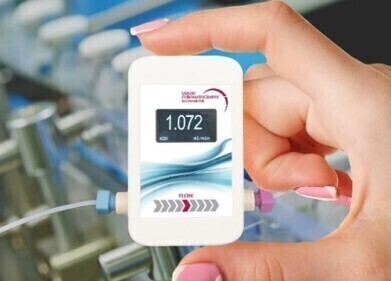HPLC, UHPLC
Cracking Open the Health Benefits of Walnuts with Countercurrent Chromatography
Dec 16 2014
From blueberries preventing cancer to garlic curing the common cold, there are many claims made about superfoods. For example, did you know that drinking juice from cloves and potatoes could cure stomach, peptic and duodenal ulcers?
However, the claims made are often not supported by scientific evidence, only anecdotal evidence. That’s not to say that scientists are not investigating these foods. It is probable that some of the nutrients in these superfoods could produce positive effects. Let’s take walnuts for example…
Walnuts — Not really Nuts
Walnuts, like many of the nuts we eat, are not actually nuts. The walnuts we commonly eat are the seeds of the tree English Walnut or Black Walnut. Like many seeds and nuts, walnuts are full of proteins, healthy oils and several vitamins and minerals essential for our health. They also contain many other chemical compounds that are not essential to human health, but might provide other health benefits such as fighting disease. These compounds are known as phytochemicals — and finding out how they work is the evidence scientists are looking for the finally crack open superfoods.
Chromatography Cracks the Nut
One of the problems with working on phytochemicals is identifying and then isolating enough of the chemicals to carry out testing on. Now a team from North Caroline State University has used chromatography to isolate and collect some of the phytochemicals in walnuts. This important step will allow research into what and how the phytochemicals can potentially help to benefit the human race.
Chromatography is the separation of a sample into its component parts. There are various ways to achieve this, but the main methods usually involve a gas or liquid mobile phase carrying the sample through a solid stationary phase. For the separation of phytochemicals a special type of chromatography was needed — countercurrent chromatography (CCC).
Countercurrent Chromatography
CCC uses two immiscible liquids in a thin tube with a centrifugal force. This means that both the mobile and stationary phases are liquids. The centrifugal force holds the stationary phase liquid in place while the mobile phase liquid passes through it. The liquid stationary phase is stable only as long as the centrifugal field is applied. The separation is based on the solute partition between the two liquid phases — basically, how the different solutes prefer one liquid over the other. The advantage in using CCC for this analysis is that as the stationary phase is a liquid, it can accommodate larger sample volumes than a solid stationary phase.
When the walnut phytochemicals had been separated by CCC, HPLC was used to identify and quantify the different extracts. One of the main aims of the researchers was to provide enough isolated phytochemicals to researchers around the world. This was to allow other researchers the opportunity to prove the health benefits of walnuts to the medical community. Until a benefit can be proven and explained it remains off-limits to doctors and is unlikely to find its way into the medical textbooks.
“Prescription for Mr Dracula — garlic sir?
Image Source: Walnuts
Digital Edition
Chromatography Today - Buyers' Guide 2022
October 2023
In This Edition Modern & Practical Applications - Accelerating ADC Development with Mass Spectrometry - Implementing High-Resolution Ion Mobility into Peptide Mapping Workflows Chromatogr...
View all digital editions
Events
Jan 20 2025 Amsterdam, Netherlands
Feb 03 2025 Dubai, UAE
Feb 05 2025 Guangzhou, China
Mar 01 2025 Boston, MA, USA
Mar 04 2025 Berlin, Germany



.jpg)








